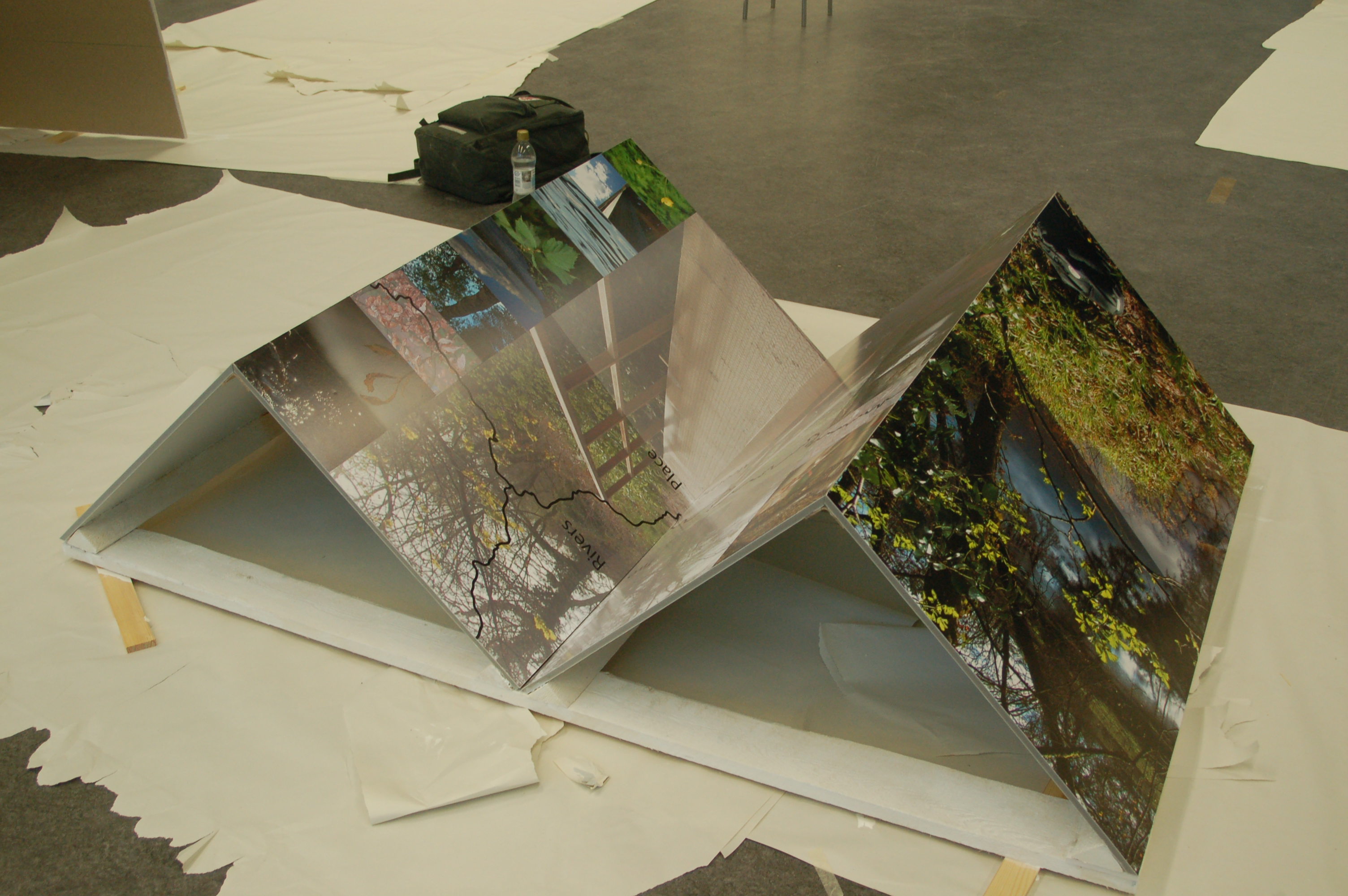The Installation Spotting AVA - Interpretations through installation is part of my master´s studies in Applied Visual Arts; it is the artistic part of my final thesis/a visualization of my master´s thesis research. The work can be seen as a visual presentation, an audit trail mapping the research journey I have been taking during my studies. The research focuses to the concept of AVA, and how it is seen in relation to the fields of art and design. Another aspect of the research focuses to the value of visualization in AVA research for which I mostly wanted to create the installation. The working process of the installation has been a long process, starting from 2011 when I first came to Rovaniemi and got interested in rivers, inspired by the river Kemijoki. River as an element is fascinating and in some level I knew that I wanted to work with rivers, though I did not then know what is was going to be. After that I have been working with RiverSounds – JoenÄäniä-project, which is also presented by documentary pictures in the exhibition. I spend the spring 2013 in Ayr, which is located in the west coast of Scotland, doing my exchange studies. As I found out about river Ayr, which streams through the town Ayr, the decision was made to include rivers as part of my research. In Scotland I was working mostly with sounds and photographs, creating a soundscape-map from the town as I heard it. I was following the river, which splits the town and collecting sounds and photographing the surroundings. I started also to write the rivers into my final thesis as they seemed naturally to find their places there. When I returned to Finland and to Rovaniemi, I started to collect materials from the river Kemijoki and at that time the two rivers (Ayr and Kemijoki) had already taken very central places in my research which can be seen in the installation. The installation connects the two places (Ayr and Rovaniemi), through place-specific elements (photographs) and through bringing the two rivers visually together. The work explores the places by showing place-specific elements from both places and bringing them together by an interdisciplinary bridge. The process has been very precious to me and even more precious when I have come to realise the strong connections between my research and the installation.







